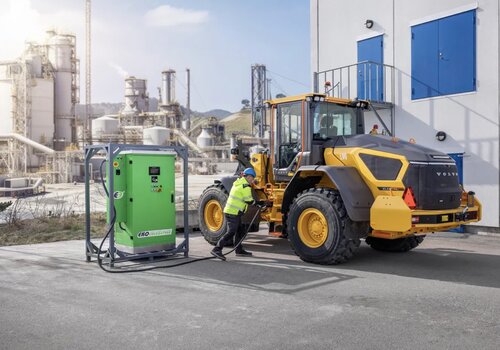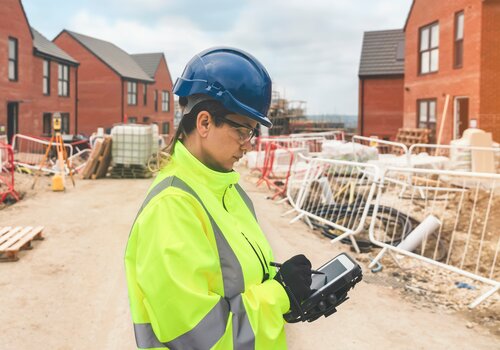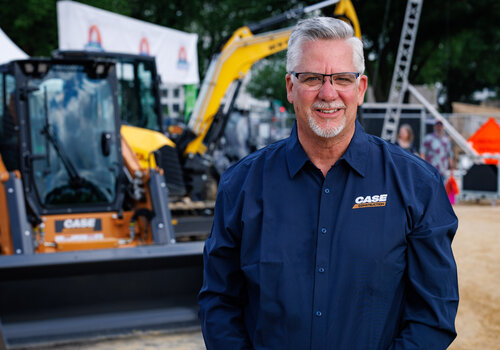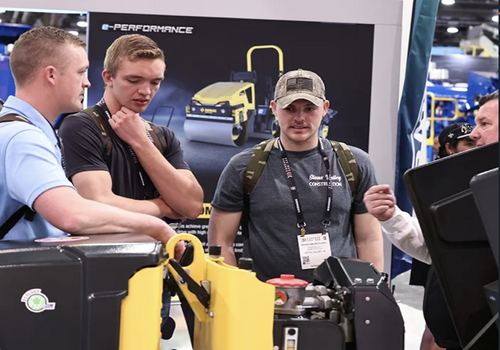National Work Zone Awareness Week (NWZAW) is an annual campaign held at the start of construction season to raise awareness about safe driving in and around work zones. The 2025 campaign hosted by the North Carolina DOT will be held April 21-25 with the kickoff event set for April 22 showcasing the theme "Respect the zone so we all get home.”
The campaign emphasizes that actions behind the wheel can last forever. For construction contractors, it’s also a time to reflect on how to better protect their workers—especially through the use of evolving technology.
Work Zones Are High-Risk Areas
Work zones combine moving equipment, uneven surfaces and close proximity to high-speed traffic. In response to rising work zone incidents, the Federal Highway Administration (FHWA) revised its regulations in November 2024 to improve safety and mobility across all stages of a project.
Collision Avoidance Systems
Collision avoidance systems use sensors, cameras, AI and more to navigate job sites. There are two components to these systems: alerting drivers of potential danger and assisting drivers in avoiding collisions. Since the top two causes of collisions are speed and distractions, this technology is increasingly helpful at both preventing collisions and reducing injury to those involved if a collision is unavoidable.
Smart Work Zones (SWZs)
Smart Work Zones use intelligent transportation systems (ITS) like variable message signs, speed detection and automated traffic control to give drivers real-time information and reduce sudden behavior changes that can lead to accidents. States like Texas and Iowa are already implementing SWZs with promising safety outcomes.
Wearable Safety Tech
Wearable devices such as smart vests, helmets and glasses are revolutionizing on-site safety. These can track worker locations using GPS, monitor fatigue and heat stress, and alert both the worker and site managers of dangers. Some advanced models also include fall detection and proximity alerts to warn workers when they’re too close to active equipment.
Geo-fencing and Worker Location Alerts
Using GPS and RFID technology, geo-fencing can create invisible boundaries around hazardous zones. When a worker or equipment enters a restricted area, the system sends immediate alerts to supervisors or halts machine operation.
Portable Intrusion Alarms
Standalone devices placed at the edge of a work zone can trigger alarms or lights if a vehicle crosses into the protected area. These systems are being trialed by multiple DOTs in 2025.
Drones for Overhead Surveillance
Drones provide real-time aerial views of traffic flow, equipment movement and pedestrian areas. The Georgia DOT has used drones to monitor compliance and identify unsafe conditions early.
Connected Vehicle Technology
Vehicle-to-everything (V2X) tech allows infrastructure to send alerts directly to vehicles. Using V2X messages, drivers can receive advance notice of critical traffic information, including construction zones, traffic incidents, scheduled events, adverse weather, road conditions and other relevant roadway updates.
Augmented Reality (AR) and Sensor-Based Detection
AR headsets can overlay warnings or hazards directly into a worker’s vision. A 2024 study showed AR can improve reaction time in work zones. In 2025, research showed radar, ultrasonic and infrared sensors embedded in barriers or cones can provide real-time intrusion alerts.
Best Practices for Contractors
• Train workers on how to operate and respond to safety alerts.
• Collaborate with DOTs and vendors for tech implementation support.
• Monitor and review safety data to assess and improve zone layout and worker protection.
• Promote a safety-first culture where workers feel empowered to speak up about hazards or tech improvements.
Final Thoughts
Technology is not just a supplement to safety—it’s becoming central to it. Participating in National Work Zone Awareness Week is a great start, but true safety leadership means staying current with innovations year-round. Whether it's drones, AR, smart wearables or sensors, tech-enabled safety is the new standard for responsible and forward-thinking contractors.
Photo Credit: ILZE79/BIGSTOCKPHOTO.COM












